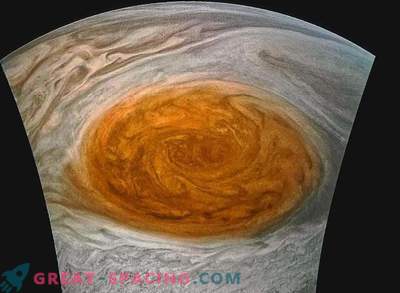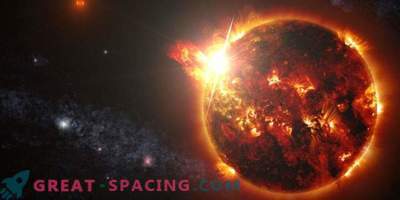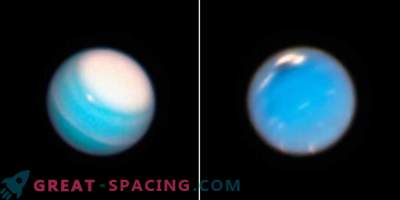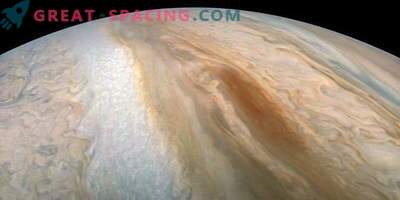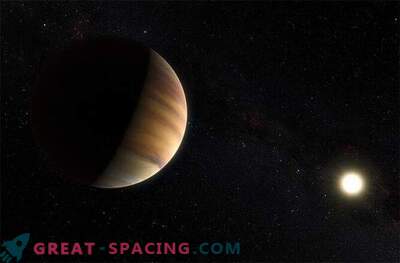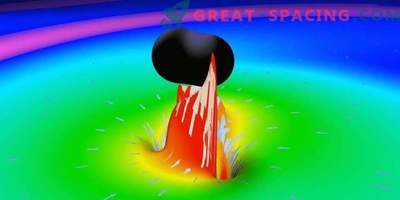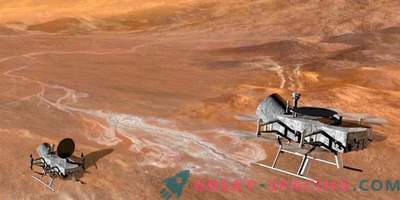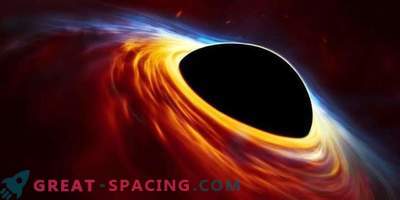
At a distance of 53 light years from Earth, there is a very unusual star on the territory of the Lyra constellation. It attracts the attention of researchers due to a strange activity in the atmosphere that resembles our Jupiter.
Get to know WISEP J190648.47 + 401106.8 (or W1906 + 40). This is a representative of L-dwarf stars. These objects are closer to the category of brown dwarfs, but are still considered stars, since they merge atoms and generate light. Recall that the classic brown dwarfs are called failed stars because they lack atomic fusion.
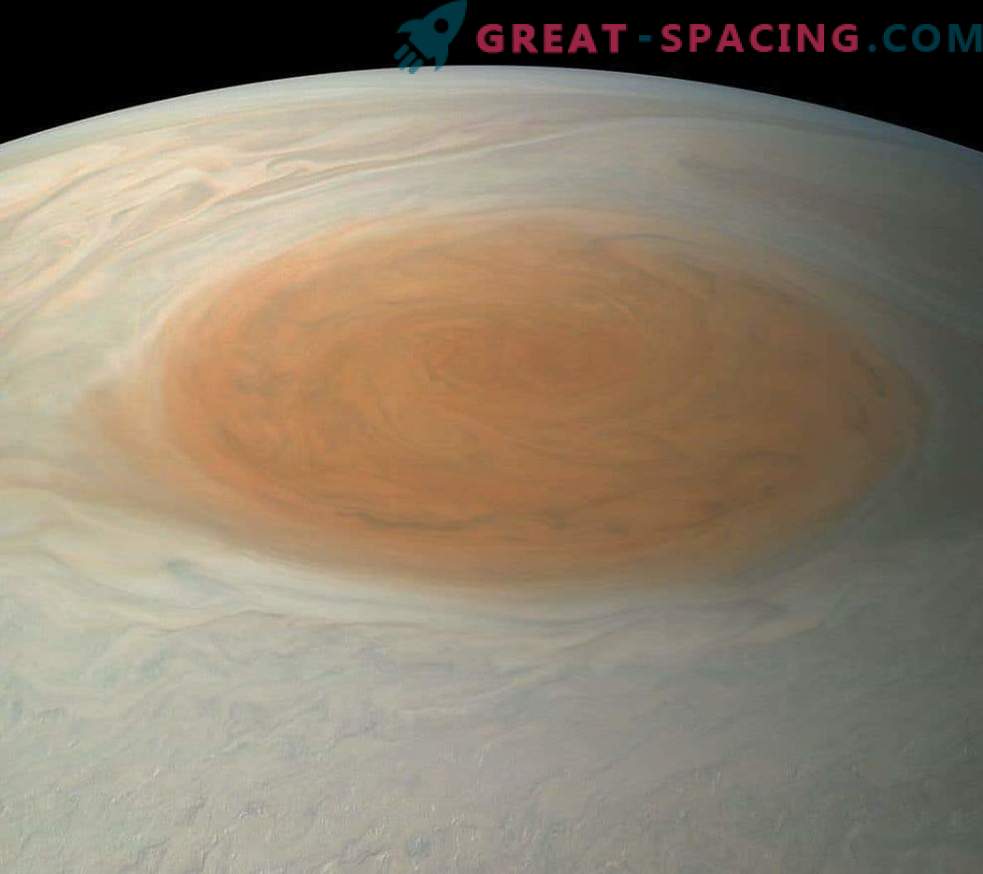
On July 10, 2017, the Juno apparatus captured this image at the seventh closest flight over a distance of 13,917 km. A picture of the Big Red Spot was processed by Bjorn Jonsson using JunoCam information. This is a true color scale storm, adapted for visual perception. It is worth noting the turbulent atmospheric sites in and around the spot. The device is located at a latitude of -32.6 degrees.
The radius of the star reaches only 90% of Jupiter, and its surface temperature is 1927 ° C. The object shows frequent flashes, but surprises completely different. The star was found in 2011, and in 2015 a huge storm was noticed in the atmosphere. More precisely, this storm in size and shape resembled the Great Red Spot of Jupiter (despite the fact that the star itself is slightly smaller than our gas giant). It is believed that the storm unfolded in 2013 and continues to this day. It rotates around a star every 9 hours. Kepler and Spitzer space telescope researchers cannot observe the W1906 + 40 storm system itself, but they learned about its presence by the way the brightness level changes over time (when the storm is observed by infrared and visible waves).
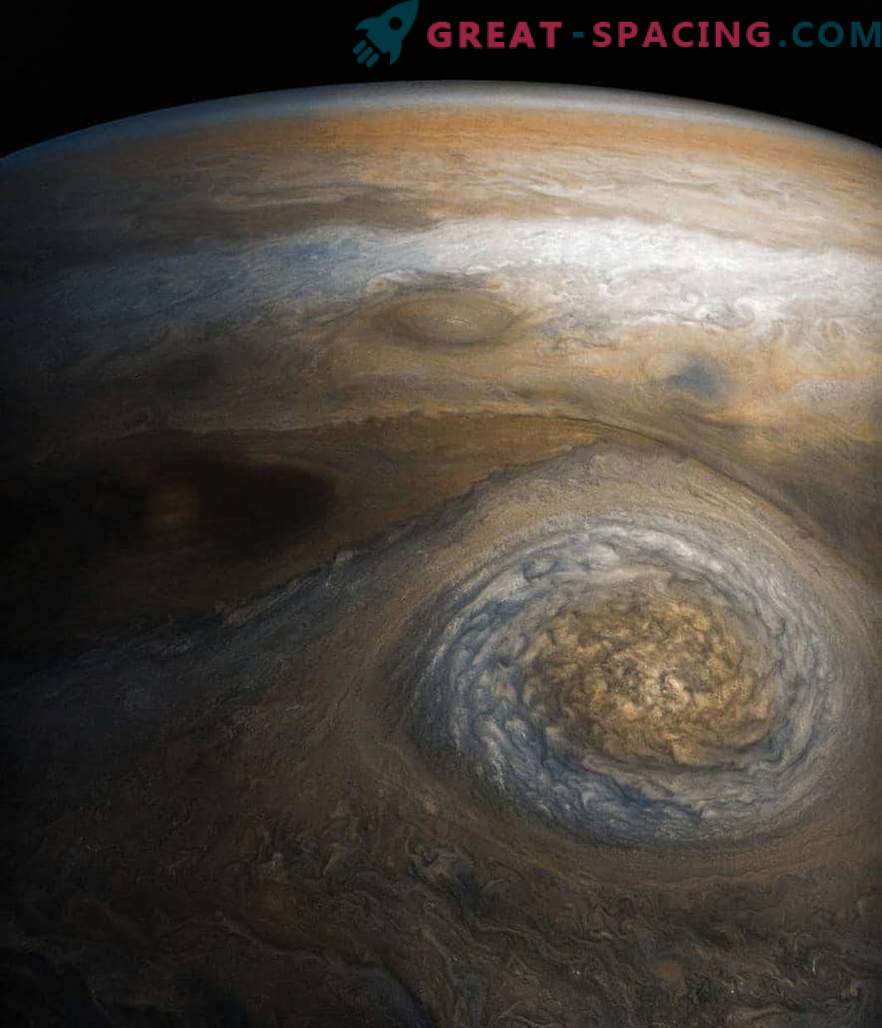
On July 10, 2017, the Juno apparatus, at an altitude of 11,444 km, managed to fix a dynamic storm located on the southern side of the northern polar section of the gas giant. Before you is a long anticyclone oval called the Northern Small Red Spot 1, which has been monitored since 1993. But he may be older. Anticyclone - the phenomenon when the winds around the storm flow move in the direction opposite to the flow around the low pressure area. It stands on the 3rd position in size on the planet and extends in length for 6000 km. Color may vary between red and white. The data was transferred to the image of Gerald Eichstadt and Sian Doran. The frame was turned so that the top displayed the equatorial areas, and the bottom - the northern polar regions. Fixed latitude - 44.5 degrees. Computer models show that the storm is closer to the north pole of the star. While researchers do not know whether this weather feature is unique or common. Also, no one can tell why the storm survived for so long.
Of course, from the side of the ufologists, there was already a message that it was not a storm at all, but a giant space station orbiting a star at a safe distance. The newcomers do not burn due to the slight heating of the L-dwarf.
Scientists dismiss this hypothesis and intend to continue the search for other brown dwarfs in order to understand the mechanisms of formation and functioning of such storms, both on stars and on planets.







